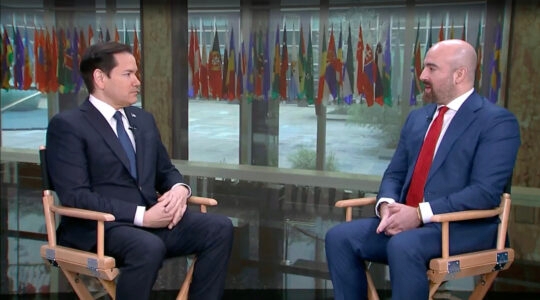Jewish households are more likely than households of other faith backgrounds to give money to the poor and needy, according to a new study economist Mark Ottoni-Wilhelm, just published in the Journal for the Scientific Study of Religion.
The study, which controlled for several factors such as size of household and family income, found that 29 percent of American households give to poverty causes, with the average combined gifts to those causes at about $490 per year. Ottoni-Wilhelm, a professor at Indiana University, found little difference between Christian households of varying denominations, but that Jewish families tend to give at a higher rate and larger gifts, according to the news site Miller-mccune.com.
The reason why seems a bit speculative, but Ottoni-Wilhelm said that he believes that it could be because Jewish clergy and Christian clergy reach out to their congregations using different pitches.
As he told miller-mccune:
The only exception was Jewish families, who were, on average, significantly more generous than those of other faiths. Ottoni-Wilhelm argues the reason for this most likely lies in the means of persuasion favored by different religious cultures.
For most Christian denominations, arguments for aiding the needy are generally framed in terms of “stewardship, duty and reciprocity,” he writes, adding there is no evidence that any of those approaches are effective. The appeals to duty provided by pastors “are especially weak, because they do not frame that duty as a part of the member’s religious identity,” he argues.
In contrast, “Jewish philanthropy uses appeals to be generous that align well” with social-science research on how to effectively frame a request for help. He notes that Jewish appeals often connect “the needs of people who are poor to the Jewish history of enslavement in Egypt,” effectively forming an empathetic connection between the person giving money and the person receiving it.
Furthermore, “The literature on Jewish philanthropy emphasizes that giving to help people with basic needs is an essential part of Jewish identity,” he notes. “(It also) emphasizes a strong community norm behind giving.”
The apparent effectiveness of these appeals, alone or in combination, “might suggest ideas that can be transferred to other religious identities” looking for ways to encourage charitable giving, Ottani-Wilhelm concludes. Given the level of need in these tough economic times, such experimentation can’t come quickly enough.
JTA has documented Jewish history in real-time for over a century. Keep our journalism strong by joining us in supporting independent, award-winning reporting.





